Wood kitchen countertops have a timeless appeal, bringing warmth and natural beauty to any kitchen space. Unlike stone or synthetic materials, wood has a unique, organic quality that makes a kitchen feel welcoming and comfortable. Choosing wood as a countertop material often means blending traditional charm with modern functionality.
Available in a variety of colors, grains, and finishes, wood countertops offer a range of customization options, allowing homeowners to create a countertop that perfectly suits their aesthetic and practical needs. Each piece of wood is unique, adding a one-of-a-kind quality to your kitchen that’s impossible to replicate with manufactured materials.
One of the greatest benefits of wood countertops is their versatility. From warm oak to exotic teak, there’s a type of wood for every design preference. Lighter woods like maple or birch give a bright and airy feel to the kitchen, while darker options like walnut or cherry add a rich, sophisticated look. Additionally, wood countertops can be cut, stained, and finished to fit different design styles, whether it’s rustic, farmhouse, or sleek and contemporary. The ability to tailor the look of wood adds flexibility for homeowners who want a kitchen that truly reflects their style.
Wood also offers a pleasant tactile experience, which is often overlooked in the design of kitchen countertops. Unlike stone, which can feel cold and hard, wood has a warm, smooth texture that is comfortable to the touch. This is especially beneficial in the kitchen, where surfaces are frequently used for tasks like meal prep and cooking. Many people find wood’s natural warmth soothing and comforting, which can make the kitchen an inviting place to spend time. Wood also absorbs sound, which contributes to a quieter, more serene kitchen environment.

Functionally, wood countertops are surprisingly durable when properly maintained. Although they may not be as hard as stone or metal, many types of wood, particularly hardwoods like maple, oak, and cherry, are more than capable of withstanding everyday kitchen tasks. With proper care, wood can last for decades, developing a beautiful patina that only adds to its charm over time. This durability makes wood an ideal choice for those who want a countertop that will age gracefully rather than looking worn or outdated.
One of the key advantages of wood is its ability to be refinished. Over time, most countertops will acquire scratches, stains, or other imperfections due to regular use. With wood, these imperfections don’t mean the end of the countertop’s beauty or functionality. A simple sanding and re-oiling can restore a wood countertop to its original condition. This is a major advantage over other materials that can be difficult or expensive to repair. Refinishing is a cost-effective way to keep wood countertops looking fresh and new, even after years of use.
Another benefit is the environmental sustainability of wood countertops. Unlike many synthetic materials, wood is a renewable resource. Many wood countertop manufacturers prioritize sourcing wood from sustainably managed forests, which ensures that trees are replanted and habitats are preserved. Additionally, wood requires less energy to produce and process than materials like quartz or granite, which need intensive mining and processing. For those who prioritize eco-friendly design, wood countertops provide a stylish and environmentally responsible choice.

However, there are some practical considerations when it comes to maintaining wood countertops. Because wood is naturally porous, it can absorb moisture, which can lead to warping or cracking if not properly sealed. It’s essential to apply a food-safe oil or sealant to protect the surface from water and stains. Regular oiling also prevents the wood from drying out, which helps maintain its smooth texture and glossy appearance. This extra maintenance might seem demanding, but it actually offers a chance to connect with the material, as oiling wood can be a meditative and satisfying experience.
One common concern with wood countertops is their susceptibility to scratches and dents. While wood can be damaged by sharp objects or heavy impacts, these marks can add character, giving the countertop a lived-in look. For those who prefer a pristine surface, using cutting boards and trivets can help protect the wood. Some woods, such as maple and oak, are especially resistant to scratches, making them ideal for busy kitchens where counters see a lot of action. Even if scratches do occur, a light sanding and re-oiling can often make them disappear.
Wood countertops are also naturally resistant to bacteria when properly sealed and maintained. Some studies suggest that wood has antibacterial properties, making it a safe choice for food preparation. However, it’s still important to keep the surface clean and dry, as lingering moisture can encourage bacterial growth. Regular cleaning with mild soap and water, along with periodic oiling, helps keep wood countertops sanitary. Unlike stone, which may require harsh chemicals for cleaning, wood can be maintained with simple, eco-friendly cleaning solutions.
In terms of installation, wood countertops can be more forgiving than other materials. Unlike stone, which requires specialized tools and expertise to cut and install, wood can often be cut and shaped with standard woodworking tools. This makes it an appealing option for DIY enthusiasts who want to tackle their own kitchen renovations. Wood is also lighter than many stone materials, making it easier to handle and install without the need for additional structural support.
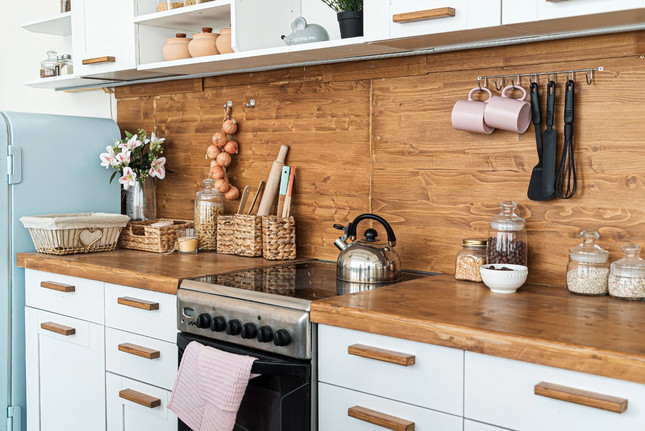
Wood kitchen countertops work well with a variety of cabinetry and backsplash options, creating a cohesive look in the kitchen. For example, a dark walnut countertop pairs beautifully with white or cream-colored cabinets for a classic look, while lighter woods can create a striking contrast with dark cabinetry. Wood can also be combined with materials like stainless steel or glass for a modern, mixed-material aesthetic. The versatility of wood allows it to blend seamlessly with any kitchen decor.
Heat resistance is another feature of wood countertops, though they are not as heatproof as stone. Wood can withstand moderate temperatures, but it’s wise to avoid placing hot pans directly on the surface. Trivets or hot pads help prevent potential damage from high heat. However, the occasional heat mark or scorch can be sanded out if necessary, and a quick re-oiling can restore the finish. This flexibility is a benefit, as minor heat damage can often be easily repaired.
Wood kitchen countertops also add value to the home. They’re seen as a premium choice that enhances the appeal of a kitchen, making the space look warm, inviting, and luxurious. Potential buyers are often drawn to the beauty and character of wood, which can increase the overall resale value of the property. Wood countertops, with their timeless appeal, are a smart investment for homeowners looking to enhance the aesthetic and financial value of their kitchens.
Finally, wood countertops encourage creativity in the kitchen’s design and layout. With the range of stains, finishes, and grains available, wood can be used to make a bold statement or provide subtle, natural elegance. Whether you’re looking to create a focal point in the kitchen or add warmth to a minimalist design, wood countertops provide a flexible canvas for expression.
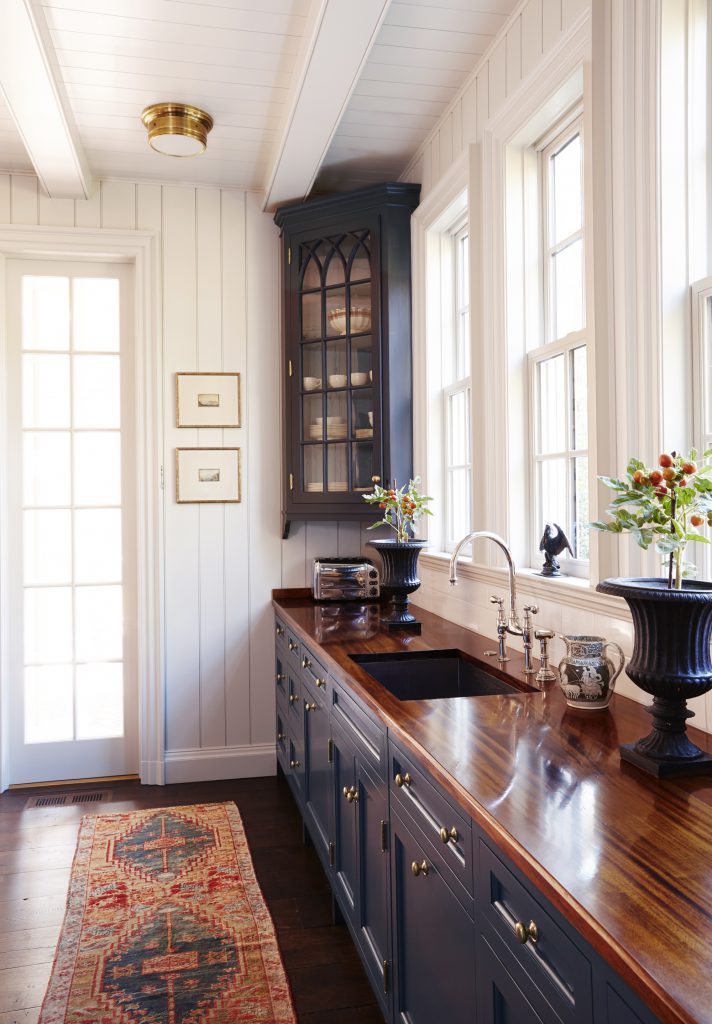
Common Mistakes to Avoid
Skipping Regular Maintenance: Wood requires regular oiling to protect it from water and stains. Ignoring this can lead to warping, cracking, or a dry, rough texture that’s unpleasant to touch.
Using Harsh Cleaners: Some cleaners contain chemicals that can damage wood, stripping away its natural oils. Stick to mild soap and water for daily cleaning and avoid bleach or abrasive products.
Not Using Cutting Boards: Cutting directly on wood can lead to scratches and dents. Always use a cutting board to protect the surface from knife marks and to preserve the finish.
Ignoring Moisture Control: Leaving water on the surface for too long can cause wood to swell or stain. Wipe up spills promptly, especially around the sink area, to prevent damage.
Placing Hot Pots Directly on Wood: Wood isn’t entirely heat-resistant, so avoid placing hot pots directly on the countertop. Use trivets or hot pads to protect the wood from scorch marks and potential damage.
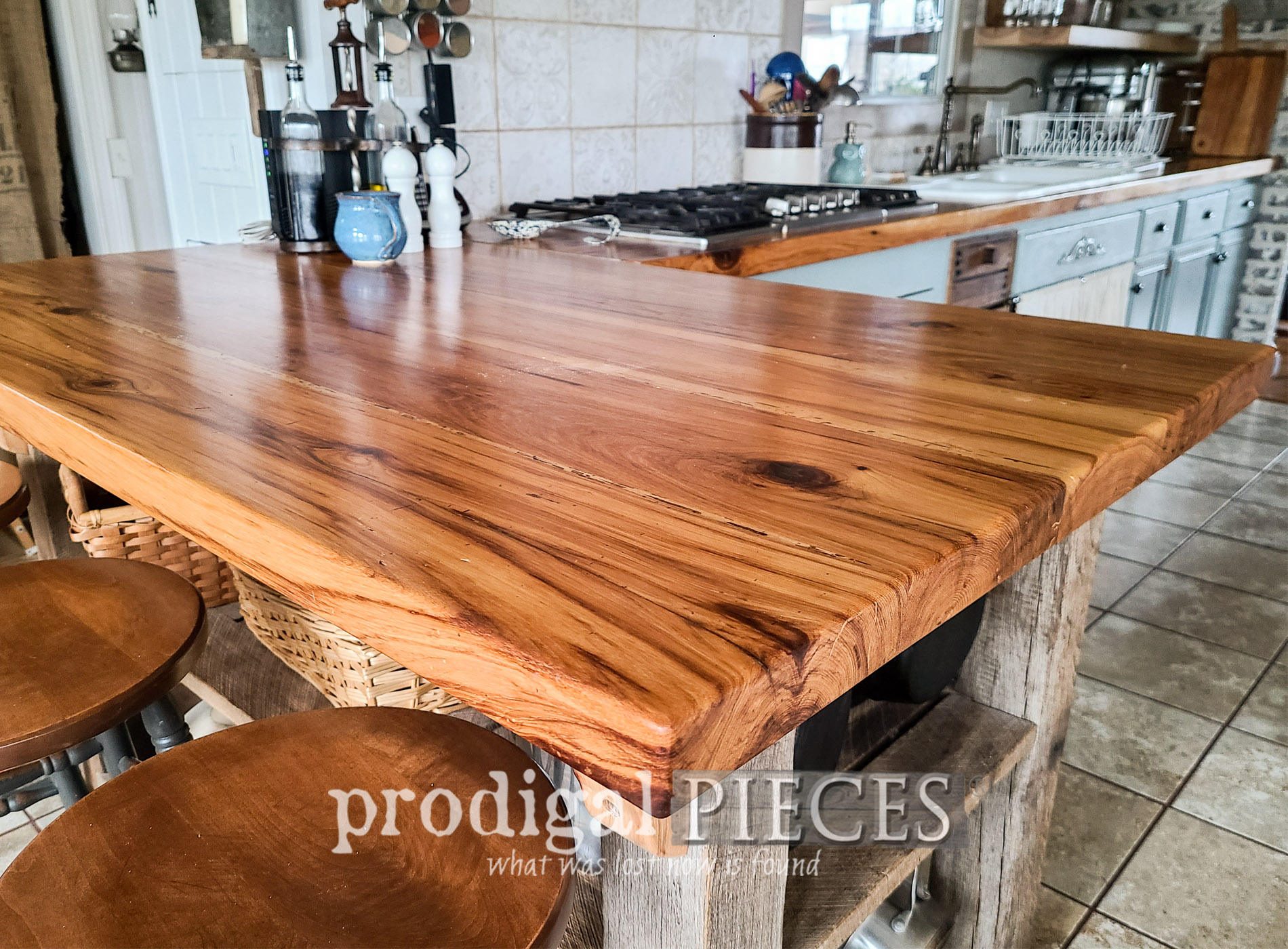
How often should I oil my wood countertop?
Oiling should be done every month for new countertops and at least once every three months for well-maintained ones. This helps keep the wood hydrated, prevents drying, and keeps the surface looking smooth and rich.
What is the best way to clean wood kitchen countertops?
A mixture of mild soap and water on a soft cloth works best for daily cleaning. Avoid harsh chemicals or bleach, as they can strip the wood of its oils and damage the finish. Wipe up spills promptly to prevent moisture absorption.
Can I cut directly on wood countertops?
No, it’s best to use a cutting board to avoid scratches and knife marks. Cutting directly on wood can damage the surface and make it harder to maintain the countertop’s finish over time.
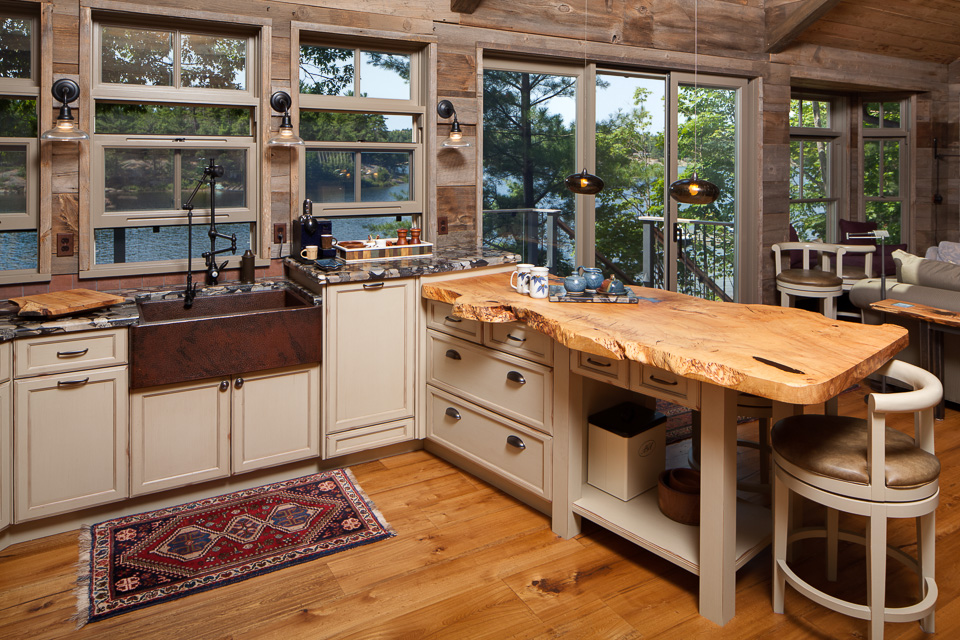
Are wood countertops sanitary for food prep?
Yes, when properly sealed and maintained, wood is safe for food preparation. Regular cleaning and oiling prevent bacteria buildup. Studies even suggest that wood has natural antibacterial properties, making it suitable for kitchens.
How can I prevent my wood countertop from staining?
Using a food-safe sealant and regularly oiling the wood helps protect it from stains. Wipe up spills immediately, especially with liquids like wine, coffee, or citrus, which can stain porous wood surfaces if left untreated.
Do wood countertops increase home value?
Yes, wood countertops are often viewed as a premium feature that adds warmth and character to a kitchen, enhancing the overall appeal of the home. Their timeless appeal can make a positive impression on potential buyers, increasing resale value.
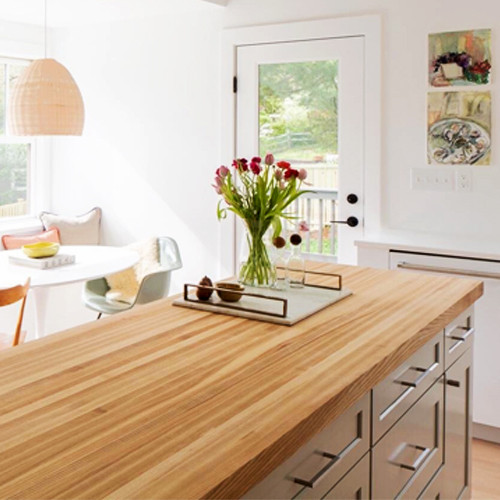
Charming and Classy Wooden Kitchen Countertops
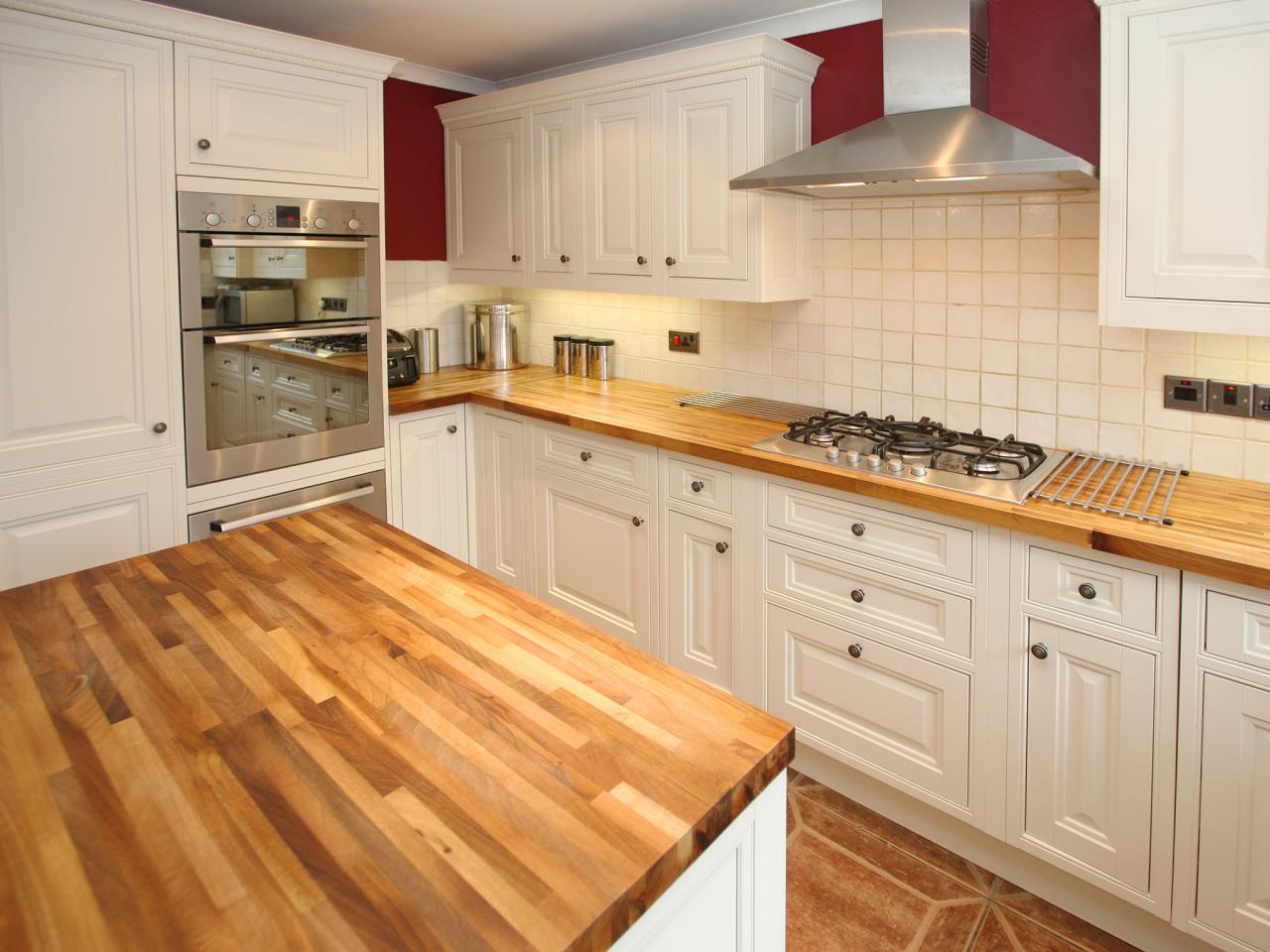
Related articles: